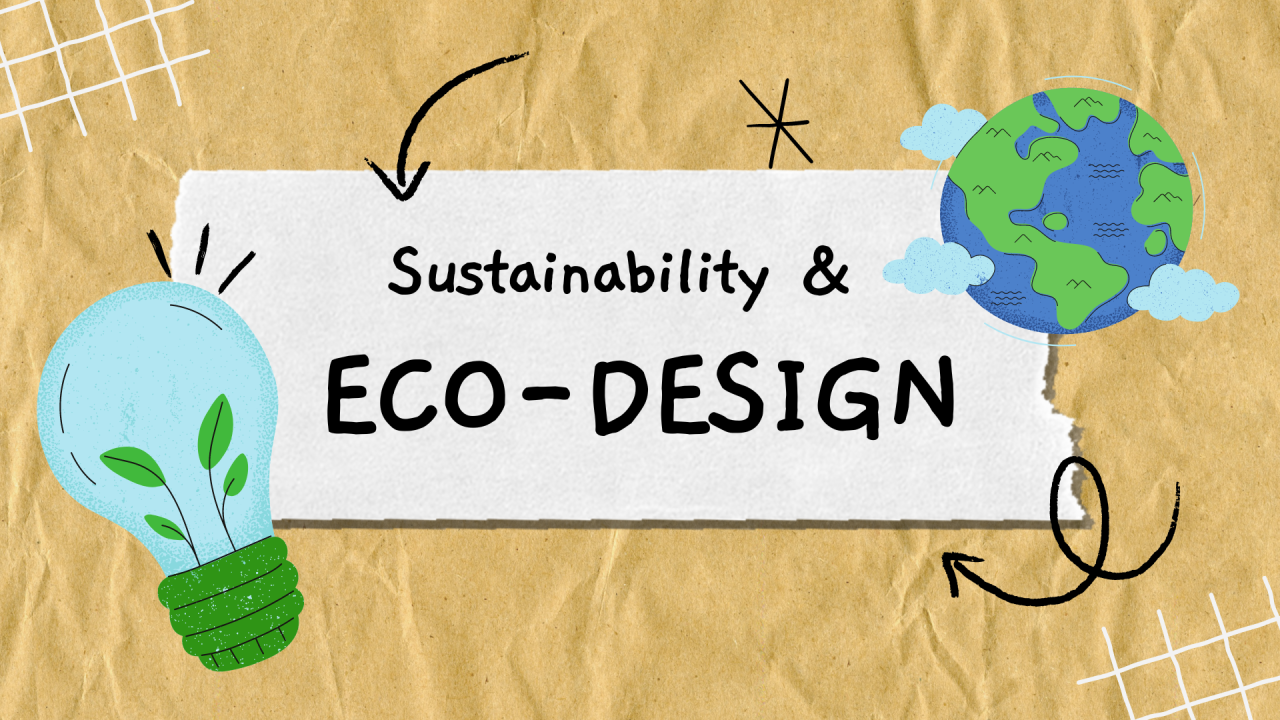
Eco-Design (Examples)
Eco-Design: What is it?
Eco-Design, also known as ecological design or design for the environment, is an approach to design that aims to reduce the environmental impact of products and services. It is based on the concept of the life cycle, considering the environmental impact of a product from its conception through production, use, and disposal.
The objectives of eco-design are:
Reduce the consumption of natural resources, such as water, energy, and raw materials.
Minimize pollution and waste.
Promote the durability and recyclability of products.
Principles of Eco-Design:
Eco-design is based on several fundamental principles:
Efficiency: Products should be designed to be resource and energy-efficient.
Durability: Products should be designed to last as long as possible.
Repairability: Products should be designed to be easily repairable.
Recyclability: Products should be designed to be recyclable.
Examples of Eco-Design:
There are numerous examples of eco-design worldwide. Some examples include:
Energy-efficient appliances.
LED lamps, more efficient than incandescent bulbs.
Electric cars, producing no emissions of pollutants.
LEED-certified buildings designed for sustainability.
Importance of Eco-Design:
Eco-design is a crucial tool for sustainability, helping to reduce the consumption of natural resources, pollution, and waste. It also contributes to the creation of a more circular economy, where products and materials are used and reused for longer periods.
Adopting Eco-Design:
Eco-design can be adopted by companies, governments, and individuals. Companies can incorporate eco-design into their products and production processes, governments can implement policies encouraging eco-design, and individuals can choose eco-friendly products and services. The adoption of eco-design is a significant way to contribute to the planet's sustainability.
Examples of Eco-Design:
With the adoption of eco-design, we can help reduce the environmental impact of products and services, contributing to the sustainability of the planet. Here are examples of products with eco-design:
Sustainable packaging
Use of biodegradable or compostable materials, reduction of plastic use, and design facilitating recycling and reusability.
Sustainable furniture
Use of certified wood from sustainable sources, modular design for easy disassembly and recycling, incorporation of recycled materials.
Green electronic products
Design for low energy consumption, easy disassembly for component recycling, use of less toxic materials in manufacturing.
Sustainable architecture
Integration of energy-efficient solutions, use of recycled or recyclable building materials, planning for natural light to reduce the need for artificial lighting.
5. Sustainable fashion
Use of organic and sustainable fabrics, design of durable and timeless clothing to reduce fast fashion waste, adoption of ethical production practices.
6. Sustainable vehicles:
Development of electric or hybrid vehicles to reduce emissions, use of lightweight and recyclable materials in manufacturing, aerodynamic design for fuel efficiency.
7. Efficient lighting:
Development of low-energy LED bulbs, luminaire design utilizing natural light whenever possible, use of recyclable materials in manufacturing.
8. Eco-friendly footwear:
Use of sustainable materials such as vegetable or recycled leather, design of durable and easily disassembled footwear for recycling, adoption of production practices minimizing waste.
9. Biodegradable cleaning products:
Formulations using natural and biodegradable ingredients, minimal and recyclable packaging, reduction of the use of environmentally harmful chemicals.
10. Sustainable gardening:
Design of durable and recyclable gardening tools, use of recycled materials in the production of pots and other accessories, promotion of organic and sustainable gardening practices.
These examples illustrate how eco-design can be applied in various areas, promoting sustainability and reducing environmental impact.
Advantages of Eco-Design:
1. Reduction of environmental impact:
Minimizes the negative impact of products on the environment throughout their life cycle, from raw material extraction to disposal.
2. Resource efficiency:
Optimizes the use of natural resources, reducing waste and maximizing efficiency in production, contributing to the conservation of scarce resources.
3. Energy savings:
Designing products with lower energy consumption helps decrease the carbon footprint associated with manufacturing, use, and eventual disposal.
4. Promotion of the circular economy:
Encourages the creation of durable, reusable, and recyclable products, fostering the transition to a circular economy where resources are kept in a cycle for as long as possible.
5. Waste minimization:
By incorporating the principles of reduction, reuse, and recycling in the design phase, eco-design contributes to minimizing solid waste, promoting more sustainable practices.
6. Technological innovation:
The focus on eco-design drives technological innovation, leading to the development of new, more sustainable technologies and materials.
7. Corporate image improvement:
Companies adopting eco-design often benefit from an improved image and reputation, as consumers are increasingly aware and value environmentally responsible practices.
8. Compliance with environmental regulations
Eco-design facilitates compliance with environmental regulations and standards, ensuring legal compliance and preventing potential negative impacts on business operations.
9. Long-term cost reduction
Implementing sustainable practices from the design stage can result in long-term cost reduction, both through energy efficiency and waste minimization.
10. Consumer satisfaction
Consumers are increasingly conscious of environmental issues, and eco-designed products can attract a more environmentally aware audience, contributing to consumer satisfaction.
What is Ecolabel?
The EU Ecolabel is a certification awarded to products that meet the environmental performance criteria set by the European Union. The criteria cover a wide range of environmental issues, including resource consumption, pollution, and waste.
Eco-design is a continually evolving field, and there are many ways to implement it. With a bit of creativity, we can find solutions that are beneficial for the environment and the economy.